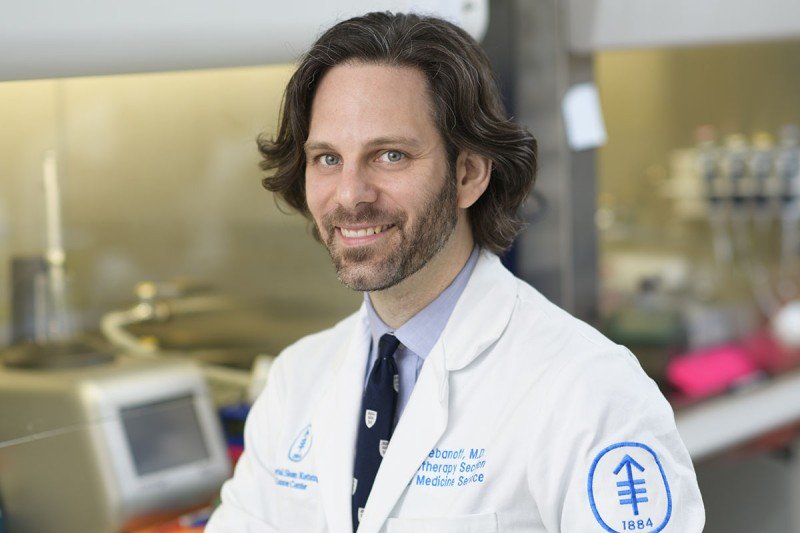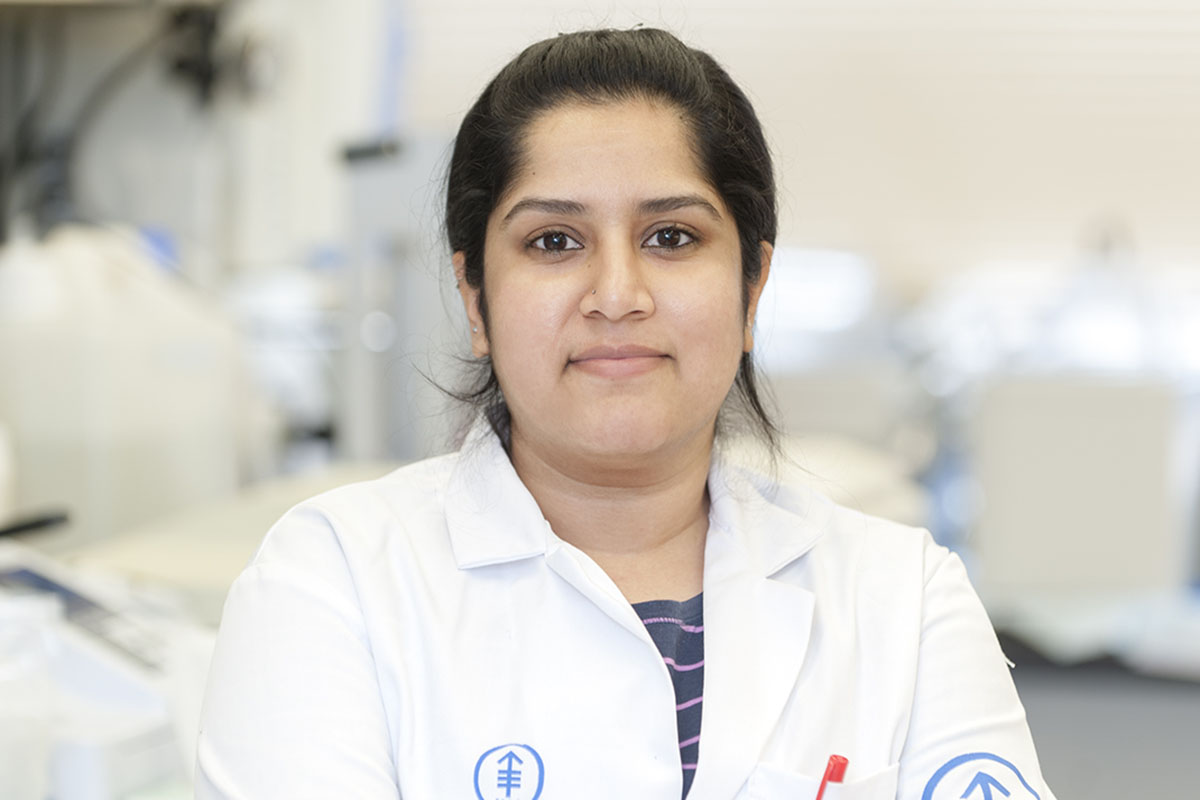
Immunotherapy is an increasingly important form of cancer treatment. It encompasses a class of cancer therapies that harness the immune system’s natural ability to recognize and eliminate tumor cells. Most immunotherapies work by boosting the power of a type of white blood cell called T cells, so they can better recognize and attack cancer.
Investigators at Memorial Sloan Kettering Cancer Center (MSK) are developing a variety of tactics for creating new immunotherapy treatments. One focus is on finding ways to engineer T cells to recognize mutated proteins that are unique to cancer cells. A paper reporting a new advance in this area was published in Nature Medicine on April 28, 2022.
“The genesis of this project was to try to come up with a new form of cellular immunotherapy that might give an inroad against cancers that are largely unresponsive to current forms of immunotherapy treatment,” says physician-scientist Christopher Klebanoff, the paper’s senior author. “We’re using a genetic engineering approach to help supercharge T cells in a new way.”
Taking Aim at a Common Cancer Mutation
Cancer is caused by the accumulation of mutated genes, some of which result in the generation of novel proteins, called neoantigens, that can be perceived by the immune system as foreign. T cells have a natural ability to recognize neoantigens, and they can be trained to do so even more effectively. The MSK researchers thought that by focusing on neoantigens resulting from recurrent “driver” mutations (those that actually cause cancer to grow and spread), they could develop an off-the-shelf therapy applicable to many patients. The study was done in collaboration with researchers from the University of Notre Dame.
The driver approach is different from immunotherapies that target neoantigens resulting from patient-specific mutations that are simply along for the ride (called passenger mutations). Therapies targeting neoantigens derived from passenger mutations are only applicable to a single patient because they target mutations unique to that person’s cancer.
Dr. Klebanoff and his colleagues decided to focus on a neoantigen created by a common driver mutation in a gene called PIK3CA. Their rationale was that this particular mutation is frequently found in breast cancer, endometrial cancer, and many other types of tumors that could benefit from more effective therapies.
“There are already drugs that target this protein, but they cause a lot of side effects,” says Smita Chandran, a scientific research lead in Dr. Klebanoff’s lab and the Nature Medicine paper’s first author. “We thought that targeting this driver gene with a cell-based immunotherapy might be more effective while at the same time reducing the risks of side effects.”
Finding a Way To Peer Inside Cells
One challenge in immunologically targeting mutant PIK3CA is that it’s found on the inside of cancer cells, a location that is inaccessible to antibody therapies. It’s also unreachable using chimeric antigen receptor (CAR) T therapy, which is a form of cellular immunotherapy that has shown clinical benefit in several types of blood cancers. Antibody and CAR T therapies can only engage target proteins displayed on the outside of cancer cells. To get around this limitation, the researchers employed a tactic called T cell receptor (TCR) therapy, which co-opts the T cell’s unique ability to survey the interior of cells for the presence of abnormal proteins.

This technology works because both cancer cells and normal cells regularly break down and recycle their proteins. As part of this process, fragments of degraded proteins within a cell are placed in a molecular basket, called a human leukocyte antigen (HLA). The loaded HLA molecule is then shuttled to the cell surface for display to T cells. The researchers discovered that a common PIK3CA mutation results in a neoantigen that is compatible with an HLA type shared by a large number of patients, creating an elite class of shared tumor-exclusive targets called public neoantigens.
Building on this finding, the investigators went on to demonstrate that T cells genetically engineered to express a TCR specific to the PIK3CA public neoantigen can attack and eliminate tumor cells while leaving healthy cells that express the normal version of protein unharmed.
TCR-engineered T cells were therapeutically effective against cancer cells in a petri dish and also against patient-derived tumor samples and in laboratory mice implanted with PIK3CA-mutated tumors. Some of the cancer types studied included breast cancer and an aggressive form of endometrial cancer called uterine serous carcinoma. These are cancers for which current immunotherapies have typically not been effective.
Bringing Lab Discoveries Into the Clinic
In addition to having a large number of side effects, the drugs that are currently approved to target mutant PIK3CA work only for a limited period. Most tumors ultimately develop resistance and begin growing again.
Based on their research in the lab, Drs. Klebanoff and Chandran expect that targeting mutated PIK3CA with immunotherapy rather than targeted therapy will not result in the same degree of resistance.
The researchers plan to work in collaboration with a pharmaceutical company to determine whether this approach could be evaluated in a clinical trial in the future. It’s possible that trials could enroll any patient whose tumor carries the PIK3CA public neoantigen, regardless of where in the body the tumors originated. The fact that this therapy targets public neoantigens is the reason this treatment would be considered off-the-shelf, rather than having to be manufactured individually for each patient.
“There’s an evolving appreciation that it’s genetic changes that contribute to cancer formation in the first place, as well as the likelihood a cancer will respond to a given therapy,” Dr. Klebanoff says. “We want to take the approach of developing treatments that are target-specific but tissue-agnostic and apply this to new immunotherapies, including the PIK3CA public neoantigen described in our paper.”








